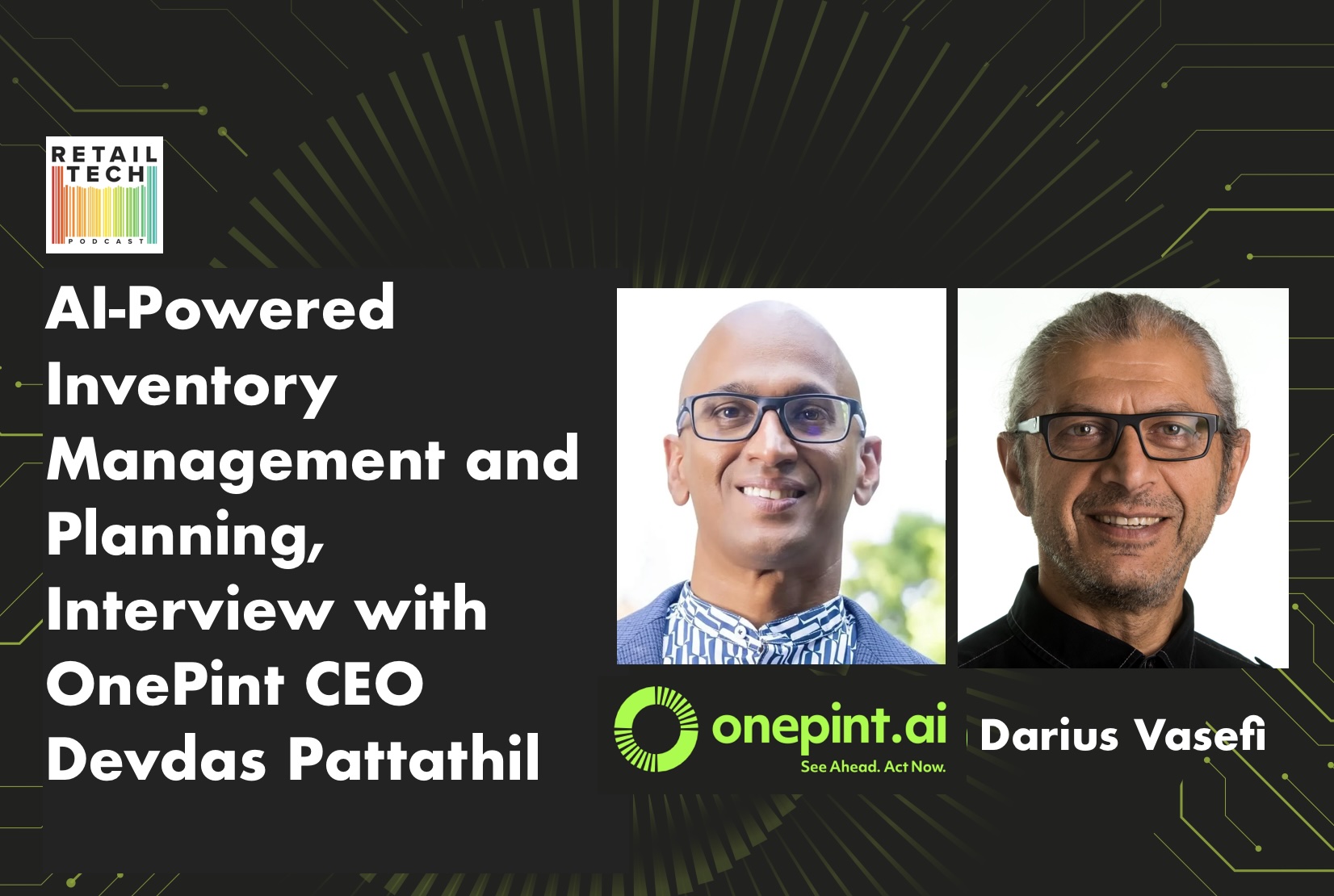

AI-Powered Inventory Management and Planning, Interview with OnePint CEO Devadas Pattathil

Welcome to another episode of the Retail Tech Podcast featuring a discussion with Devadas (Das) Pattathil, CEO of OnePint. Pattathil, with extensive experience in supply chain. Das introduces OnePint as a company focused on AI-powered inventory management, born from a prior venture called Nextuple.
Reinventing Inventory: The Evolution of Planning, Management, and the Role of Generative AI
In today’s dynamic retail and consumer goods landscape, inventory planning and management sit at the heart of profitability, operational efficiency, and customer satisfaction. While often treated as back-office functions, they are in fact powerful levers that determine how well a business can meet demand without tying up excess capital or losing customers to stockouts.
Inventory planning is the strategic process of predicting future demand to ensure the right products are available in the right locations at the right time. It includes forecasting, replenishment strategies, and planning for seasonal or promotional spikes. In contrast, inventory management focuses on the day-to-day control of stock levels—tracking what's available, where it is, how quickly it's selling, and when it's time to reorder or rebalance.
Historically, this field was dominated by legacy enterprise tools—monolithic systems like SAP, Oracle, and Blue Yonder—used by large retailers and manufacturers. These platforms are robust but often complex and rigid, requiring heavy customization and long implementation cycles. Newer challengers like Relex, o9 Solutions, and Manhattan Associates have emerged with more agile, cloud-based solutions, but many still require significant IT and data science support to extract value.
At the same time, a wave of cloud-native, ecommerce-centric platforms has emerged to support the growing needs of mid-market and direct-to-consumer brands. Companies like Inventory Planner, Cogsy, and Flieber provide lighter-weight forecasting and replenishment tools tailored for fast-moving brands. Others, like Pipe17, focus more on integration and operations—connecting sales channels, ERPs, and fulfillment partners to keep inventory data flowing across the stack.
In this increasingly crowded landscape, companies like OnePint.ai are carving out a new category: AI-native inventory decision platforms. Rather than simply analyzing past data or automating repetitive tasks, they use autonomous simulations and generative AI to make real-time inventory decisions, recommend actions, and even explain those decisions in natural language. This is where the future of inventory planning is headed—and it’s a future being rewritten by generative AI.
How Generative AI Is Reshaping Inventory Strategy
Generative AI is not just another analytical tool—it represents a paradigm shift in how inventory planning and management are approached.
First, it enhances decision-making by simulating multiple demand and supply scenarios. Instead of relying on rigid, rules-based reorder points, modern systems can now run dynamic simulations: “What happens if a top seller goes viral next week?” or “How do we prepare if a supplier delays a shipment by 10 days?” These simulations are made accessible to planners through natural-language interfaces powered by large language models (LLMs), making advanced forecasting intuitive and interactive.
Second, generative AI helps normalize and interpret data from fragmented sources—POS systems, ecommerce platforms, warehouse management software, supplier portals, and more. By synthesizing these inputs, it creates a unified, real-time view of stock positions and movement risks, dramatically reducing the need for manual data wrangling or complex dashboards.
Third, it is changing how operators interact with inventory systems. Traditional interfaces are being replaced by conversational agents and AI copilots that can answer questions like: “Which SKUs are likely to run out before our next shipment?” or “What’s the ROI of overstocking for the holiday season?” These agents not only deliver insights but also provide explainability—offering reasoning behind recommendations, something static dashboards can’t do.
In this conversation we cover the fundamental definition of the supply chain as the movement of goods and highlights inventory management and orchestration as a crucial component, emphasizing the costs of both overstocking and understocking.
A key focus is on how Generative AI and agentic AI are revolutionizing inventory planning by enabling dynamic decision-making based on real-time trends and data, moving beyond static rules and allowing for outcome-based optimization in areas like fulfillment and planning and how OnePint is aiming to improve the process.